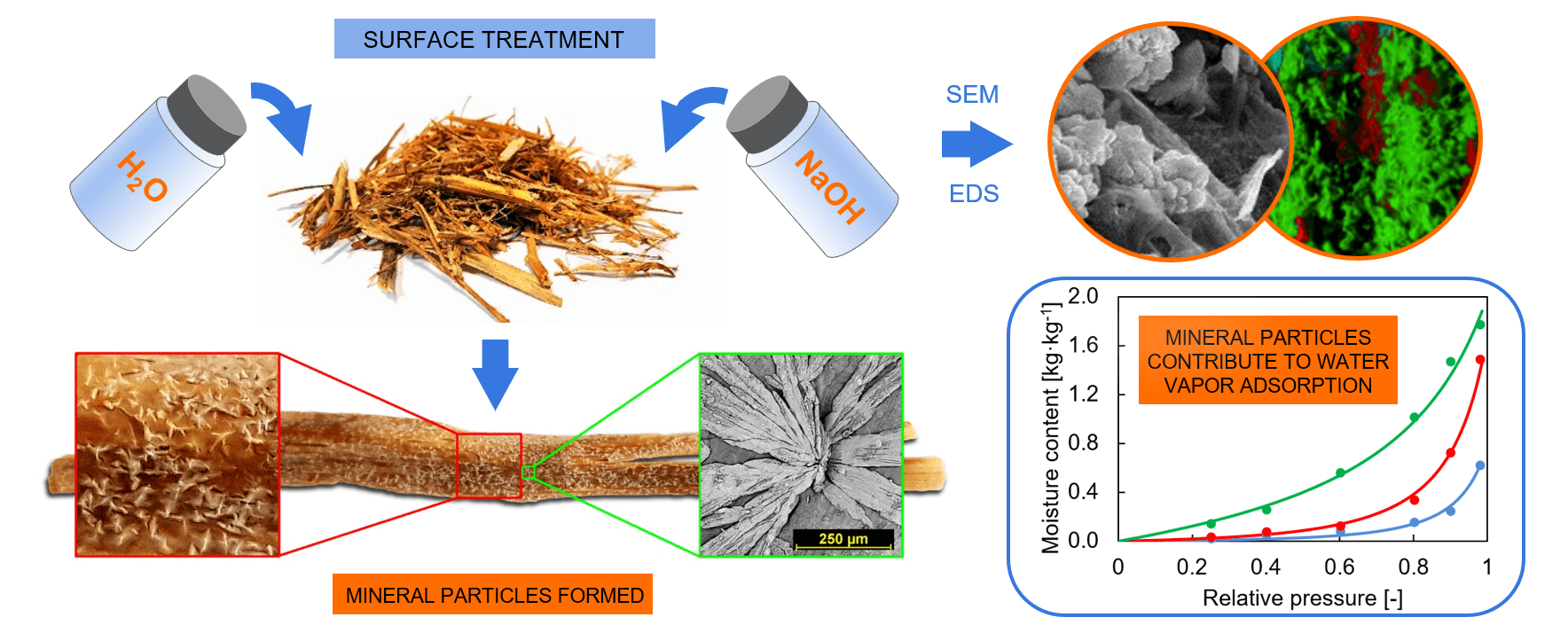 Open Access
Open Access
ARTICLE
Alkaline Treatment of Straw for Composite Material Production and Its Impact on Water Vapor Adsorption Characteristics
Department of Materials Engineering and Chemistry, Faculty of Civil Engineering, Czech Technical University in Prague, Thákurova 7, Prague, 166 29, Czech Republic
* Corresponding Author: Martin Böhm. Email:
Journal of Renewable Materials 2025, 13(2), 363-383. https://doi.org/10.32604/jrm.2024.056984
Received 04 August 2024; Accepted 23 October 2024; Issue published 20 February 2025
Abstract
The effect of using 2% and 10% sodium hydroxide solution as surface treatment of rape straw on its water vapor adsorption properties is analyzed in the relative humidity (RH) range of 0% to 98%. Scanning electron microscopy (SEM), energy dispersive spectroscopy (EDS), and Fourier-transform infrared spectroscopy (FTIR) are used to investigate the morphological, chemical and structural changes of the treated straw surface. The mineral particles formed on the surface after the treatment are analyzed using X-ray diffraction (XRD). The application of sodium hydroxide solution results in the disruption of the straw surface. As the concentration of sodium hydroxide increases, the disruption of the straw surface increases, and the ability of the straw to adsorb water vapor also increases over the entire RH range. In addition to the surface disruption and chemical changes caused by the alkaline treatment, the differences in the equilibrium moisture content of treated and untreated rape straw can also be attributed to the formation of minerals on the straw surface, namely calcite for the 2% sodium hydroxide solution, and gaylussite and thermonatrite for the 10% solution.Graphic Abstract

Keywords
Cite This Article
 Copyright © 2025 The Author(s). Published by Tech Science Press.
Copyright © 2025 The Author(s). Published by Tech Science Press.This work is licensed under a Creative Commons Attribution 4.0 International License , which permits unrestricted use, distribution, and reproduction in any medium, provided the original work is properly cited.


 Submit a Paper
Submit a Paper Propose a Special lssue
Propose a Special lssue View Full Text
View Full Text Download PDF
Download PDF Downloads
Downloads
 Citation Tools
Citation Tools